» posted on Friday, March 29th, 2013 by Linda Lou Burton
Story Wisps
 Linda Burton posting from Charleston, West Virginia – A good story wisp makes you want to know more. Cemeteries are filled with story wisps; a row of children that died within days of each other – was it a terrible fever that struck? Or an accident? How did a mother manage her grief after such a loss? As I drove through the historic Old Circle section of Spring Hill Cemetery, high on a hill overlooking Charleston, I wondered about the death of Chloe V Fry, buried in her 25th year. Her marker, a beautiful obelisk with handcarved roses at the top, dates to 1830, when her husband James had it erected with these words “that he may record here that she was an affectionate and devoted wife, a kind and charitable neighbor, a watchful and tender mother, a dutiful daughter and a Christian, sincere, resigned, and patient, with the hope that her children may come to it as to the shrine of virtue and resolve ‘to go and do likewise.’” Did those children regularly visit their mother’s grave? Did this symbol of honor and respect color the lives they went on to live? A story wisp. I’d stopped at the cemetery office first to get some history of Spring Hill
Linda Burton posting from Charleston, West Virginia – A good story wisp makes you want to know more. Cemeteries are filled with story wisps; a row of children that died within days of each other – was it a terrible fever that struck? Or an accident? How did a mother manage her grief after such a loss? As I drove through the historic Old Circle section of Spring Hill Cemetery, high on a hill overlooking Charleston, I wondered about the death of Chloe V Fry, buried in her 25th year. Her marker, a beautiful obelisk with handcarved roses at the top, dates to 1830, when her husband James had it erected with these words “that he may record here that she was an affectionate and devoted wife, a kind and charitable neighbor, a watchful and tender mother, a dutiful daughter and a Christian, sincere, resigned, and patient, with the hope that her children may come to it as to the shrine of virtue and resolve ‘to go and do likewise.’” Did those children regularly visit their mother’s grave? Did this symbol of honor and respect color the lives they went on to live? A story wisp. I’d stopped at the cemetery office first to get some history of Spring Hill 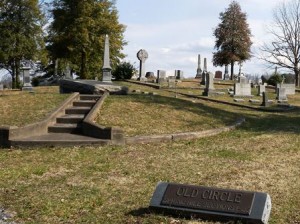 Cemetery; Glenna gave me a map outlining the sections that spread over 150 acres of hills and valleys; 40,000 graves they have recorded, but there are more. It’s listed on the National Register as a Historic Place; the earliest graves go back to 1818; it has been owned by the City of Charleston since 1869. The cemetery tells the history of Charleston, in wisps. Glenna showed me notebooks she is assembling to expand the stories; like me, she is intrigued to know more. I share a few with you.
Cemetery; Glenna gave me a map outlining the sections that spread over 150 acres of hills and valleys; 40,000 graves they have recorded, but there are more. It’s listed on the National Register as a Historic Place; the earliest graves go back to 1818; it has been owned by the City of Charleston since 1869. The cemetery tells the history of Charleston, in wisps. Glenna showed me notebooks she is assembling to expand the stories; like me, she is intrigued to know more. I share a few with you.
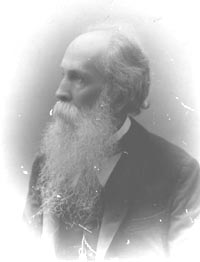 Dr John P Hale (1824-1902) is buried in the Old Circle. According to Donna’s notes, his maternal ancestors were the Ingles and Drapers; families who founded Drapers Meadows, the first white settlement west of the Alleghenies. His great-grandmother Mary was taken captive by Indians in 1755 and was the first white person to traverse the Kanawha Valley. It was 1840 when John Hale came to the valley and took up the study of medicine; in 1847 he went into the salt manufacturing business. He organized an artillery battery for service with the Confederacy at the start of the Civil War; he went on to Richmond where he was a Confederate surgeon.
Dr John P Hale (1824-1902) is buried in the Old Circle. According to Donna’s notes, his maternal ancestors were the Ingles and Drapers; families who founded Drapers Meadows, the first white settlement west of the Alleghenies. His great-grandmother Mary was taken captive by Indians in 1755 and was the first white person to traverse the Kanawha Valley. It was 1840 when John Hale came to the valley and took up the study of medicine; in 1847 he went into the salt manufacturing business. He organized an artillery battery for service with the Confederacy at the start of the Civil War; he went on to Richmond where he was a Confederate surgeon.
His list of “firsts” for contributions to the city of Charleston is awesome – he introduced the first brick-making machinery; he paved the first brick street in Charleston (actually, it was the first in America); he helped start the first steam ferry business (Here’s Your Mule!); his own steam yacht was named “The Pet.” He helped organize the “Bank of the West” in Charleston; he led in organizing the first gas company in Charleston. He was Mayor of Charleston and president of the first daily newspaper. He built the first theater, started the first public delivery of ice, and established the first steam laundry. He opened a barrel manufacturing factory and made a thousand barrels a day, used for packing salt. In 1871 he 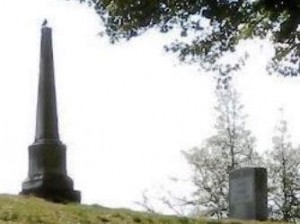 put up the money to build the capitol at Charleston and built the Hale House Hotel to accommodate the legislators. A prolific writer of books of history and a free thinker in religion, Hale never married and left no children. He died in 1902. I did not find his marker as I drove around the Circle; I wondered if it might be the one on the hill with the bird perched atop; John Hale also is credited with bringing the first English sparrows to America in 1870.
put up the money to build the capitol at Charleston and built the Hale House Hotel to accommodate the legislators. A prolific writer of books of history and a free thinker in religion, Hale never married and left no children. He died in 1902. I did not find his marker as I drove around the Circle; I wondered if it might be the one on the hill with the bird perched atop; John Hale also is credited with bringing the first English sparrows to America in 1870.
I see two other doctors on Glenna’s list. Dr Henry Rogers (1788-1837) was one of the first doctors in Charleston; sadly infant graves near his show death dates for his children as 1822, 1823, 1825, 1827, and 1828. Dr Spicer Patrick (1791-1884) came in 1816; in addition to traveling long distances to care for his patients, he also served in the Legislature; Charleston’s Patrick Street is named for him.
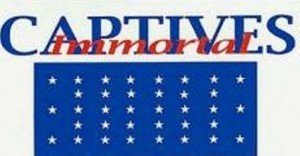 There are some war stories here; Jimmy Clark Welch (1836-1861) was killed in action with John Hale’s artillery battery at the Battle of Scary Creek; H C Dickinson (1830-1871) served in the Confederate Army; he was captured and imprisoned with 600 others (known as the Immortal 600); as an ex-Confederate he could no longer practice law. He followed his father in salt making, then went into banking. He was serving as Charleston’s first Democratic Mayor when he died. Col Alexander Quarrier (1746-1827) commanded a company in the Revolutionary War; Charleston’s Quarrier Street is a main downtown route today.
There are some war stories here; Jimmy Clark Welch (1836-1861) was killed in action with John Hale’s artillery battery at the Battle of Scary Creek; H C Dickinson (1830-1871) served in the Confederate Army; he was captured and imprisoned with 600 others (known as the Immortal 600); as an ex-Confederate he could no longer practice law. He followed his father in salt making, then went into banking. He was serving as Charleston’s first Democratic Mayor when he died. Col Alexander Quarrier (1746-1827) commanded a company in the Revolutionary War; Charleston’s Quarrier Street is a main downtown route today.
James Truslow (1778-1830) was Charleston’s first tailor. It was his son John who was appointed to acquire the property for Spring Hill Cemetery. Moses Frankenberger (1834-1902) owned Frankenberger’s Clothing Store; because he sided with the Union during the Civil War, he was imprisoned for three months and lost a large part of his fortune.
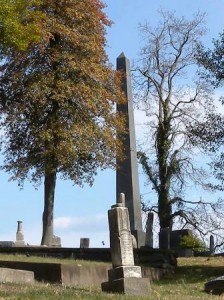 There are story wisps of judges and educators on this hill too. George Summers Laidley (1855-1938) was known as Professor George; he was Superintendent of Charleston schools from 1878 to 1922 and was instrumental in founding the Kanawha County Library. Judge James Henry Brown (1818-1900) served as a judge in various courts in West Virginia for nearly fifty years; he was a staunch defender of the Constitution and deplored secession. When the granite obelisk monument for his grave was erected, it took a team of 24 mules to drag it up the hill; it weighed 35 tons and stands 30 feet tall.
There are story wisps of judges and educators on this hill too. George Summers Laidley (1855-1938) was known as Professor George; he was Superintendent of Charleston schools from 1878 to 1922 and was instrumental in founding the Kanawha County Library. Judge James Henry Brown (1818-1900) served as a judge in various courts in West Virginia for nearly fifty years; he was a staunch defender of the Constitution and deplored secession. When the granite obelisk monument for his grave was erected, it took a team of 24 mules to drag it up the hill; it weighed 35 tons and stands 30 feet tall.
There is tragedy in the Old Circle, as in any cemetery. One that particularly caught my attention was the story of Miles Vernon Dixson (1913-1935). He was a teller at Kanawha Valley Bank but he longed to be an aviator. He pursued his dream; he went to Glen Clark’s seaplane flying school on the Kanawha River. Just before taking his test, he went on a practice flight; as he flew over the cemetery one of the wings came off his plane and he perished in the crash, at the sweet young age of 22.
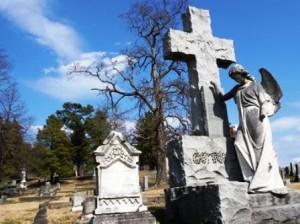 I paused for pictures at the Cotton monument. Harry F Cotton (1854-1878) is buried there. I have no information about Harry, who died at 24, except that his monument was hand-carved in Italy. Whatever his story, it is evident that someone wanted him to be remembered, just like Chloe Fry.
I paused for pictures at the Cotton monument. Harry F Cotton (1854-1878) is buried there. I have no information about Harry, who died at 24, except that his monument was hand-carved in Italy. Whatever his story, it is evident that someone wanted him to be remembered, just like Chloe Fry.
Spring Hill Cemetery, 1555 Farnsworth Drive, Charleston, 304-348-8010, office open Mon-Fri 8-4, gates open dawn to dusk every day, bird watchers and historians welcome. http://www.cityofcharleston.org/government/city-departments/spring-hill-cemetery
The oldest section of Spring Hill Cemetery is the Old Circle. Situated on a promontory overlooking Farnsworth Drive, its monuments, curbs, walls, and landscaping create a strong sense of dignity and serenity. The layout of the lots is intricate with intersecting curves and circles notable for the period. Certain funerary symbols of grief and hope and a diversity of building materials are evident throughout the cemetery. Other sections include a Confederate Soldiers’ plot, a field for the American Legion, a potter’s field, Mt. Olivet Cemetery, and a Roman Catholic cemetery.
Bird walks are held at Spring Hill Cemetery Park on Sunday mornings during peak migration seasons. A list of species, resident or transient at Spring Hill Cemetery Park, has been compiled by members of the Handlan Chapter of the Brooks Bird Club, an organization dedicated to studying birds in the Kanawha Valley, 304-925-5668.
